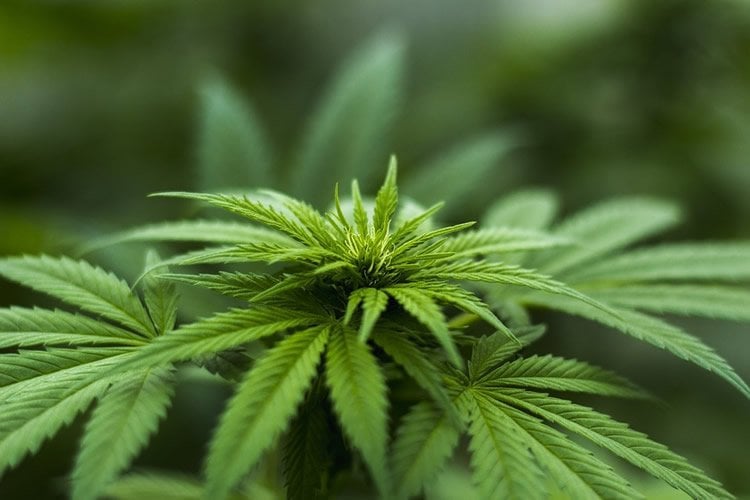Summary: Researchers report cannabis users exhibit increased synchrony in cortical regions during resting state than those nonusers. The study also reports cannabis users show greater cortical communication in the frontal regions of the brain.
Source: Center for Brainhealth UT Texas.
Recent research from the Center for BrainHealth at The University of Texas at Dallas shows that cannabis users experience increased cortical activation during the brain’s resting state when compared with nonusers.
The resulting “noisy brain” might impair brain activity and disrupt cognitive processes, said Dr. Shikha Prashad, the study’s lead author and a research scientist at the Center for BrainHealth.
“This study is the first to characterize global cortical activation and both inter- and intrahemispheric functional connectivity during resting state in cannabis users,” said Prashad, who works in the lab of Dr. Francesca M. Filbey, the Bert Moore Chair in BrainHealth at UT Dallas.
The results of the study were published in the journal NeuroImage.
The researchers collected electroencephalogram (EEG) data from 38 participants in two groups: 17 cannabis users and 21 nonusers. The EEG test measures electrical activity in the brain — also known as brain waves. Scientists measured the synchronization of brain waves to evaluate the strength of the brain signals in different cortical regions. Such coherence of the EEG signal is a measure of the communication between different regions of the brain.
The results demonstrated that cannabis users exhibited increased synchronization — or activation — of most of the different types of brain waves, compared to nonusers. Similar results have been found in other studies of heroin-, alcohol- and cocaine-dependent users.

In addition, greater cortical communication among the frontal regions of the brain was observed in cannabis users. Prashad said this could signify that participants had difficulty inhibiting neural activity that has been observed in Dr. Filbey’s previous studies, which would cause them to exert more effort as they attempted to stop doing certain tasks. Changes in communication between the brain’s cortical areas could also be related to cognitive impairments correlated with cannabis use.
The findings of this research suggest that further studies are needed during task-related activity for comparison, Prashad said. These results could contribute to understanding cognitive impairments and the development of electrophysiological patterns to help map and evaluate the success of interventions.
Funding: This study was funded by the National Institutes of Health (grant number R01 DA030344).
Source: Stephanie Hoefken – Center for Brainhealth UT Texas
Publisher: Organized by NeuroscienceNews.com.
Image Source: NeuroscienceNews.com image is in the public domain.
Original Research: Abstract for “Cannabis users exhibit increased cortical activation during resting state compared to non-users” by Shikha Prashad, Elizabeth S.,Dedrick, and Francesca M.Filbey in NeuroImage. Published September 2018.
doi:10.1016/j.neuroimage.2018.06.031
[cbtabs][cbtab title=”MLA”]Center for Brainhealth UT Texas”Increased Cortical Activation in Cannabis Users’ Brains During Resting State.” NeuroscienceNews. NeuroscienceNews, 5 September 2018.
<https://neurosciencenews.com/resting-cortical-cannabis-9802/>.[/cbtab][cbtab title=”APA”]Center for Brainhealth UT Texas(2018, September 5). Increased Cortical Activation in Cannabis Users’ Brains During Resting State. NeuroscienceNews. Retrieved September 5 2018 from https://neurosciencenews.com/resting-cortical-cannabis-9802/[/cbtab][cbtab title=”Chicago”]Center for Brainhealth UT Texas”Increased Cortical Activation in Cannabis Users’ Brains During Resting State.” https://neurosciencenews.com/resting-cortical-cannabis-9802/ (accessed September 5 2018).[/cbtab][/cbtabs]
Abstract
Cannabis users exhibit increased cortical activation during resting state compared to non-users
Studies have shown altered task-based brain functioning as a result of cannabis use. To date, however, whether similar alterations in baseline resting state and functional organization of neural activity are observable in cannabis users remains unknown. We characterized global resting state cortical activations and functional connectivity via electroencephalography (EEG) in cannabis users and related these activations to measures of cannabis use. Resting state EEG in the eyes closed condition was collected from age- and sex-matched cannabis users (N = 17; 6 females; mean age = 30.9 ± 7.4 years) and non-using controls (N = 21; 9 females; mean age = 33.1 ± 11.6 years). Power spectral density and spectral coherence were computed to determine differences in cortical activations and connectivity between the two groups in the delta (1–4Hz), theta (4–7 Hz), alpha (8–12 Hz), beta (13–30 Hz), and gamma (31–50 Hz) frequency bands. Cannabis users exhibited decreased delta and increased theta, beta, and gamma power compared to controls, suggesting increased cortical activation in resting state and a disinhibition of inhibitory functions that may interrupt cognitive processes. Cannabis users also exhibited increased interhemispheric and intrahemispheric coherence relative to controls, reduced mean network degree, and increased clustering coefficient in specific regions and frequencies. This increased cortical activity may indicate a loss of neural refinement and efficiency that may indicate a “noisy” brain. Lastly, measures related to cannabis use were correlated with spectral power and functional connectivity measures, indicating that specific electrophysiological signals are associated with cannabis use. These results suggest that there are differences in cortical activity and connectivity between cannabis users and non-using controls in the resting state that may be related to putative cognitive impairments and can inform effectiveness of intervention programs.






